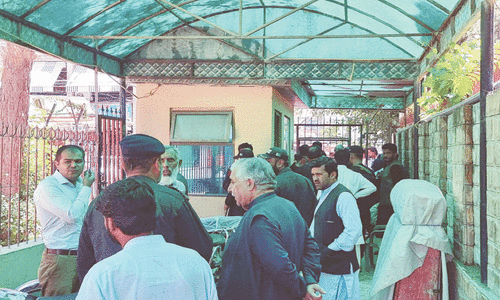PESHAWAR, Aug 24: A joint team of Directorate of Museum and Archaeology and Tourism Corporation Khyber Pakhtunkhwa has succeeded to identify and re-ascertain the exact location of the famous Shahji Ki Dheri, a historical Buddhist site in the provincial metropolis.
A press released issued by the corporation said that the site receded into oblivion after it was rediscovered and excavated by archaeologists more than a century ago.
Located a few furlongs outside the Gunj Gate of the old Walled City of Peshawar, it is a site of extraordinary archaeological importance where an imposing stupa had once stood.
It was built during the reign of Kushan Emperor Kanishka in the 1st century AD. It was described in detail by Chinese pilgrims in their memoirs. Hiuen Tsang (Xuan Zang) in particular visited it during his travels in 629AD-645AD and called it the “tallest architectural building” in this part of Asia.
It is estimated that the stupa was equivalent to a present day 13-storey building. The adjoining monastery was associated with Buddhist divines of Vasubandhu and Parva. With the decline of Buddhism in the region, the traces of the stupa and monastery faded away.
The press release said that a French archaeologist Alfred Foucher, who was a professor at University of Paris, visited Peshawar towards the end of 19th century, and noticed two mounds southeast of Peshawar outside the Walled City. He attempted to relate them to Hiuen Tsang's description of the place.
In 1908, D. Brainerd Spooner, an American archaeologist working for the British Archaeological Survey of India and the first curator of Peshawar Museum, undertook excavation work at a site then known as Shahji Ki Dheri (Shahji's Mound, since it was privately owned by a Syed family).
Finding ruins of a stupa and monastery, he was able to confirm Foucher's hypothesis in the light of Chinese pilgrims' accounts.
In March 1909, when digging had reached the centre of the base of stupa, Mr Spooner made a sensational discovery that stirred the archaeological world. A relic casket in gilt-bronze was recovered containing Buddha's bone fragments and ashes.
The casket was inscribed with Emperor Kanishka's name and figure. The British Government later gifted the Buddha's relics to Burma where they are enshrined in the main pagoda at Mandalay. The bronze casket is on display in Peshawar Museum, while its replica is kept in the British Museum.
Subsequent excavation work yielded priceless Gandharan statues and other objects which are on display in museums around the world. When excavation work stopped the significance of the area was forgotten.
In order to ascertain and pinpoint the exact location of Shahji Ki Dheri site of yore, a team headed by Director Museums and Archaeology Nidaullah Sehrai visited Akhunabad. Employing satellite images and using old revenue land maps and archival records the team was able to survey the locality and narrow it down to a 24-Kanal stretch of land where the stupa and monastery once stood.
Mr Sehrai said that the department had so far notified only five sites in the entire Khyber Pakhtunkhwa which was a pity.














































Dear visitor, the comments section is undergoing an overhaul and will return soon.